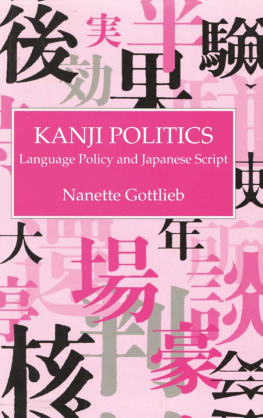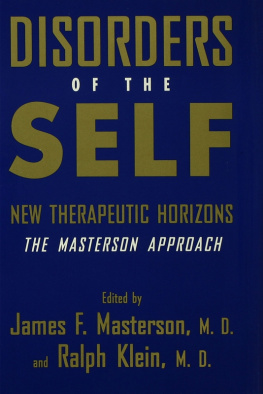.
It is now some sixteen years since I first realized the importance of symbolic language in Buddhism. At the time of that initial discovery I was a bhikkhu (Buddhist monk), living in a quiet forest monastery near Chiangmai in northern Thailand. I had been practising, for the past year and a half, some of the best-tried techniques of Buddhist meditation and, feeling that they were too limited in scope, had begun developing different techniques which I at the time assumed to be original and unorthodox. This meditative experimentation brought some novel insights into the nature of mental processes. It also led me to rethink certain aspects of Buddhist doctrine; teachings that had seemed to make little sense now became intelligible provided that certain key terms were understood as having a second, non-literal level of meaning, a symbolic meaning.
This finding encouraged me to press on with my experiments in meditation, and at the same time to study more closely the Pali canon of Theravda Buddhism, along with modern commentators interpretations of it. During the next year (my second as a bhikkhu) my meditative experiments led to extension and refinement of the techniques, and my textual studies turned up progressively more substantial evidence of symbolic language in the canon. Meanwhile, reading on related topics revealed that my findings were not original. The meditative techniques I was developing had been described by various writers decades earlier, and the importance of symbolic language in the Pali canon had been pointed out at least ten years previously by the Thai monk Buddhadasa and discussed by him in a number of lectures and publications. In addition, I learned that other branches of Buddhism explicitly acknowledge the existence of symbolic language. In the Vajrayna tradition, now preserved mainly in Tibetan sects, it has long been recognized that certain important teachings are expressed in a form of secret symbolic language known as sadhy-bh, Twilight Language. Mudrs and mantras, maalas and cakras, those mysterious devices and diagrams that were so much in vogue in the pseudo-Buddhist hippie culture of the 1960s, were all examples of Twilight Language, and were therefore relevant to my developing ideas on Buddhist symbolism. I came to feel that I was confronting a vast problem in decipherment, similar to that which an archaeologist confronts when he examines a corpus of inscriptions in an unknown ancient tongue. I had gained a few hints about the nature of this symbolic language, but for the most part it remained a baffling mystery.
At about this time I began communicating my findings to my former fellow-student and travelling companion, Martin Stuart-Fox. He was in Paris at the time; but a little more than a year previously we had spent some time together when he visited me in Chiangmai, and one of our main topics of conversation had been meditation. In a series of lengthy letters I described to him the meditative techniques I was experimenting with, the apparently intentional symbolic correspondence between those techniques and certain key Buddhist teachings, and the challenging problems posed by the concept of Twilight Language. Martin expressed enthusiasm for my ideas, while at the same time criticizing some of my tentative interpretations as poorly substantiated or historically improbable. An historian, with Asia as his area of particular interest, he was able to point out chronological discrepancies entailed in the interpretations, which I, trained principally as a linguist and with a poor sense of history, had been unconscious of. Thus began a fruitful exchange of ideas which would in time lead to our agreeing to collaborate in writing this book.
I spent the third year of my monkhood in India, searching in museums, libraries, ashrams, and Tibetan monasteries for material relevant to my research into Buddhist symbolism. That research grew progressively wider in scope as the far-reaching ramifications of the problem gradually became apparent. On the side of symbolism the study took in material from fields as diverse as temple architecture, cosmology, and mathematical notations; and on the side of meditation it entailed numerous discussions with gurus of every religious persuasion, in addition, of course, to continued personal practice. My ideas on the nature and significance of the Twilight Language developed gradually, and I repeatedly revised and refined my tentative interpretations. In its later stages this process of finding meaning in the symbols became increasingly dependent on Martins historical insights, particularly on his recognition of the role of macrocosm-microcosm parallelism.
It was during the summer of that year in India that I began writing the first draft of this book. At the time, I was staying near Almora, a small town in the Himalayan foothills, and the environment was particularly conducive to such work. The people with whom I was sharing the big colonial house were keen followers of Krishnamurti, whose teachings on meditation proved, on examination, to be largely in agreement with my findings; and only half a hours walk away lived Lama Govinda, author of several books on Tibetan Buddhism, who was always happy to spend an afternoon discussing meditation and symbolism. I completed that first draft shortly after my return to Thailand, and sent it to Martin for his critical comments. He pointed out many shortcomings, but work on revising the draft had to be delayed because of various worldly problems. (These entailed, among other things, my leaving the Buddhist Sangha and returning as a layman to Australia.)
Two years later Martin and I met again in Calcutta and began a year-long field trip through India, in the course of which I wrote a second draft. Again Martin read and criticized it, but this time his criticisms and suggestions for improvement were so far-reaching and of such value that I recognized that we really ought to collaborate. The book thus became a joint work. Progress thereafter was slow because of many competing commitments; but now, a further eleven years later, the work is at last complete. In its final form the book is much less extensive than were the earlier drafts. This is because we decided to delete much material that seemed only marginally relevant; for example, the longest chapter in the second draft, entitled Alphabet Symbolism, has been completely deleted, as being more suitable for a specialized journal article. The result is a more compact book encompassing only the most important examples of symbolism found in the Pali canon and in the later Twilight Language of Tantric Buddhism.
A major objective in writing this book has been to offer practising meditators new lines of approach by drawing attention to possible alternative interpretations of certain Buddhist teachings. Some friends who read the nearly completed manuscript asked why we had bothered to discuss symbolism at all, since the meditative techniques to which the sybolism appears to refer are so much more important. We have two main reasons for discussing meditation and symbolism together. First, meditators with a Buddhist background are often reluctant to try out a meditative technique unless they have some convincing evidence that it was taught by the Buddha; the symbols may provide this evidence. Second, many people with an interest in Buddhism tend to take the symbols at face value; an attempt to find meaning underlying the symbols may help remove misconceptions. For both of these reasons it is appropriate to discuss symbolism as well as meditative practice, and to seek to understand the relationship between them.






